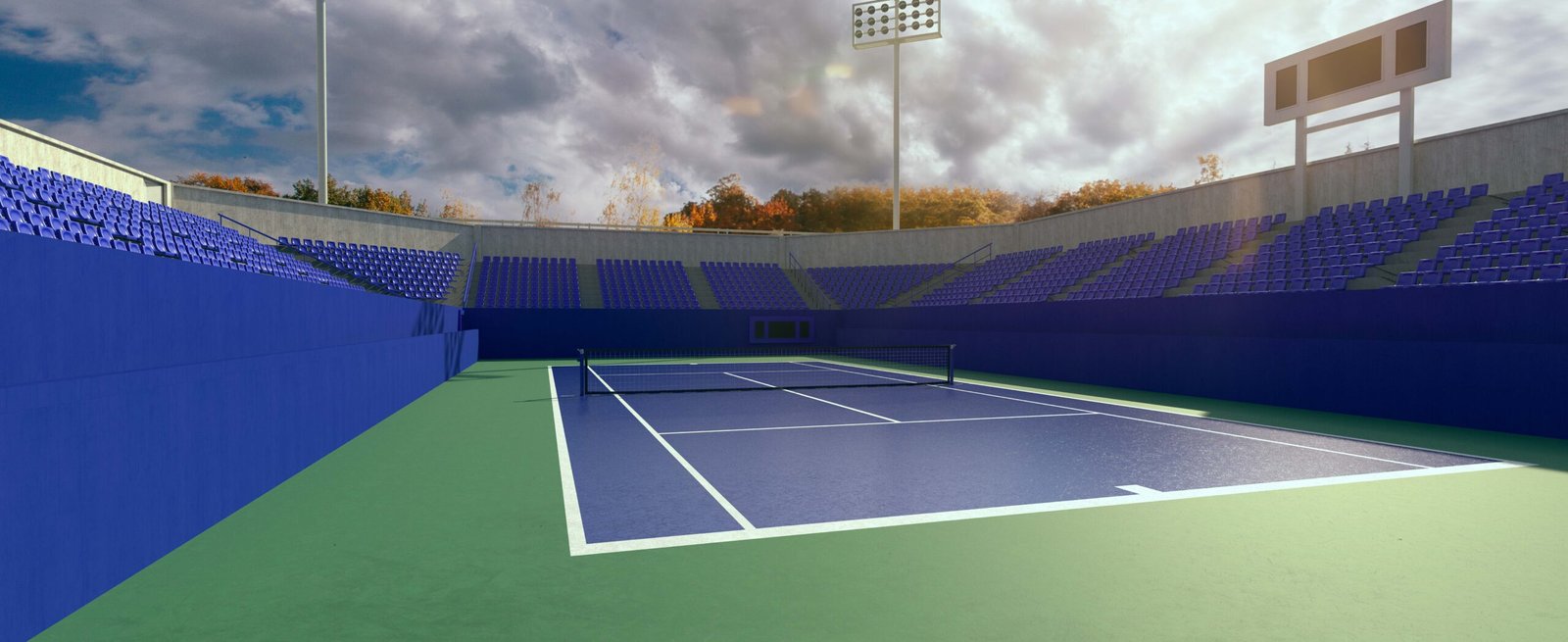- 3 January 2025
- terranexintl.com
The Ultimate Guide to Tennis Courts and Its Types, Maintenance, and Benefits
In this article of the ultimate guide to Tennis Courts a full guide has been shared for pure purpose of knowledge. But what are Tennis courts? we will have a look at that as well. Tennis courts are the foundation of one of the world’s most beloved sports. Whether you’re a casual player or a seasoned professional, understanding the different types of tennis courts, their maintenance needs, and the benefits they offer can enhance your experience on the court.

Types of Tennis Courts
- Hard Courts
- Material: Made of asphalt or concrete with an acrylic surface layer.
- Features: Medium-paced surface with consistent bounce.
- Popular Use: Common in public parks and professional tournaments like the US Open.
- Clay Courts
- Material: Composed of crushed stone, brick, or shale.
- Features: Slower surface that rewards strategic play.
- Popular Use: Iconic in European countries and used in the French Open.
- Grass Courts
- Material: Natural grass grown on a soil base.
- Features: Fast-paced with low, unpredictable bounces.
- Popular Use: Classic surface for tournaments like Wimbledon.
- Artificial Turf Courts
- Material: Synthetic fibers that mimic grass.
- Features: Durable, with a balance between grass and hard court characteristics.
- Popular Use: Recreational facilities and clubs.
Maintenance Tips for Tennis Courts
Proper maintenance ensures longevity and optimal playing conditions. Here are essential tips for each surface:
- Hard Courts: Regularly clean debris and apply resurfacing layers every 5-7 years.
- Clay Courts: Water the surface frequently and level it using a drag brush.
- Grass Courts: Mow regularly and ensure proper drainage to prevent waterlogging.
- Artificial Turf: Sweep the surface to remove debris and refill infill material when necessary.
Benefits of Playing on Tennis Courts
- Physical Fitness: Tennis improves cardiovascular health, agility, and strength.
- Mental Well-being: Engaging in tennis enhances focus, strategic thinking, and stress relief.
- Social Interaction: Tennis courts foster community engagement and provide opportunities to meet fellow enthusiasts.
- Skill Development: Different surfaces challenge players to adapt their techniques, improving overall gameplay.

How to Choose the Right Tennis Court
When selecting a tennis court for your needs, consider the following:
- Purpose: For competitive play, hard and clay courts are ideal, while recreational players may prefer artificial turf.
- Location: Grass courts require specific climates, whereas hard courts are versatile for most areas.
- Budget: Maintenance costs vary; clay courts are labor-intensive, while hard courts are cost-effective in the long run.
For the best sports court development services, consider Terranex International. As one of the leading companies in the industry, they specialize in creating high-quality and durable sports courts tailored to meet your specific needs. Terranex also provide Building construction, Renovation services.
Conclusion
Tennis courts are more than just playing surfaces; they’re a gateway to health, camaraderie, and skill enhancement. By understanding the types, maintenance requirements, and benefits of different courts, you can make informed decisions that elevate your tennis experience. Whether you’re building a new court or choosing one to play on, this guide has you covered.
Optimize your game by selecting the perfect tennis court today!